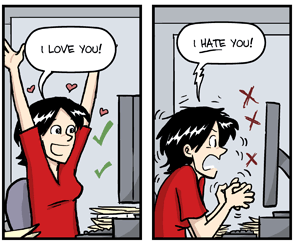Evolutionary Genetics ➜ Bioinformatics

- Date: W39-W41
- Lecturer: Jean-Claude Walser
- Update: Mon, 19 Aug 2024
Start
- Tuesday, 24.09.2024 at 14:15 in the small lecture hall (1st floor), Zoological Institute, Vesalgasse 1
Overview
Bioinformatics is an essential tool for modern biologists, enabling them to manage and analyse large data sets, such as the genomic data that is increasingly central to today's research. It plays a critical role in understanding genomics, advancing personalised medicine, modelling biological processes and fostering collaboration. By promoting data sharing and reproducibility, bioinformatics accelerates research and opens up new career opportunities, making it a valuable skill for biologists.
This course starts with the basics - command line skills and R programming that form the foundation of bioinformatics. From there we'll move on to sequencing data analysis. As you develop your skills, you'll learn to write reports and ensure reproducible results. We'll also revisit basic concepts that are often overlooked in self-study. The course is designed to adapt to your background and interests, with discussions tailored to enhance your learning experience. This module serves as a starting point for your bioinformatics journey.
Requirements
Take a look at the Requirements. You will have plenty of time to prepare yourself and your computer for this class. It is imperative that your computer is ready before we begin!
Assignment
The assignment is part (⅓) of your final grade. It is important to me that you can apply what you have learned. Depending on your R-level, you will have the choice between two different assignments. Best of luck and do not hesitate to ask for help. There is strength in the "together"!
Deadline for the Assignment
Sunday, 20. October 2024
Assignment: R-Project: Rolling-Dices (Advanced)
At the beginning of the bioinformatics section, you were asked to write an R script that simulated rolling two dice 10 times and recording the results in a file. Now it's time to take this initial script to the next level. Your task is to improve and refine the script using the skills you've learned, such as better coding practices, adding helpful comments, improving reproducibility, and introducing new features.
Try to create several improved versions of the dice script, each saved as a separate R script file (e.g. version1.R, version2.R, etc.). Once you've created these versions, tie them all together by writing a summary report in R Markdown explaining the different approaches you took in each version.
This exercise will help solidify your understanding and demonstrate how even simple scripts can be made more robust, efficient, and clear.
I'd like to have the entire project directory - including the different script versions, corresponding images and the summary report in both Markdown and HTML formats - packed into a single zip archive file. Happy coding!
Possible structrue of your R project directory:
-File: EvoGen24_BioInf_AssignmentA_<Author>.zip
│
└── R_Project_Rolling_Dice (Project directory)
│
├── RollingDices.Rproj (Project file)
│
├── images (Figures)
│ └── image1.jpg
│ └── image2.jpg
│
├── <Version1>.R (Different
├── <Version2>.R versions
├── <Version3>.R of
├── <Version4>.R the
├── <Version5>.R. R-script)
│
├── Summary.Rmd (RMarkdown Summary Report)
├── Summary.html (HTML Summary Report)
│
└── etc
Assignment: R-Function (Beginners)
Create your own R function and document it thoroughly using R Markdown. Apply what you've learned, such as adding comments to explain and structure the code. Be sure to include a title, version number, and author information.
We've gone through some simple examples in the lecture and practised converting R code into functions with just a few tweaks. For additional inspiration, take a look at the Hall of Fame - a collection of creative and original R functions developed by previous students of this course. These examples should give you some ideas and motivation.
Please send me your R function, including any relevant visuals or datasets. Along with this, provide a well-documented application in both Markdown and HTML formats. Package everything in a single zip file for easy submission and use.
-File: EvoGen24_BioInf_AssignmentB_<Title>_<Author>.zip
│
├── <Title>.Rfunction (R-Function
├── <Title>.Rmd (Documentation of the function (RMarkdown))
├── <Title>.html (Documentation of the function (HTML))
│
├── Data (Data and more, used for the function)
│ └── table.csv
│ └── info.txt
│
├── Figures (Figures in the documentation)
│ └── fig1.txt
│ └── fig2.txt
│
└── etc (Whatever else you used)
Here is an example. Please do not use it as a template, but rather as an inspiration.